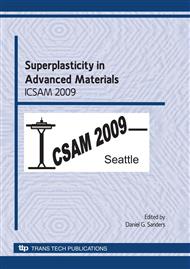p.77
p.85
p.93
p.103
p.113
p.119
p.125
p.135
p.141
A Theoretical Investigation into the Effect of Laser Parameters on the Surface Cleaning of Ti-6Al-4V
Abstract:
Chemical cleaning has been used for several decades as a surface preparation technique for diffusion bonding. Here we present a theoretical investigation that examines the effect of changes in the process parameters when a laser is used as an alternative to chemical cleaning for surface contaminant removal. Here a theoretical model is described that includes laser beam attenuation in the plasma plume and its effect on evaporation of the material. Using the model, a comprehensive analysis of the effect of different fluences and other parameters for a KrF Excimer laser is presented. Calculations were carried out for a range of peak fluxes from below the ablation threshold to fluxes of the order of 9 x 1012 W/m2. The predicted effects on evaporation, melt depth and surface temperature are reported, illustrated by a number of surface topographic images from preliminary experiments. Finally, optimal parameters for cleaning according to the theoretical investigation are proposed.
Info:
Periodical:
Pages:
113-118
Citation:
Online since:
March 2010
Authors:
Price:
Сopyright:
© 2010 Trans Tech Publications Ltd. All Rights Reserved
Share:
Citation:


